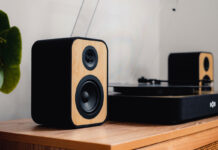
Every home should have a portable power station. Not only do they provide peace-of-mind in the event of a power outage. They are useful to have on the go for a camping trip, boat ride, or RV, as well as in emergency situations. They can power everything from your laptop to CPAP machines, even large appliances depending on the capacity and power. So many families focus on emergency preparedness with items like flashlights, canned goods, blankets, and more. Add a portable power station to that mix, too.
In this guide, I’ll explain what a portable power station is and how and why you’d use one. I will also highlight some of the best portable power station models to consider.
What is a portable power station?

First, let’s define what a portable power station is. Think of portable power stations as a mix between a large battery and a portable charging bank. The tabletop (or larger) sized devices contain a built-in rechargeable battery and various ports to power devices. They come with all types of ports, including AC, USB-A, USB-C inputs, and 12V. Some also contain solar panels for back-up power from the sun. A display usually shows charging status and battery life.
How long and what a portable power station can charge depends on the battery capacity, measured in watt-hours or Wh, and power draw. They can usually hold a charge for several months. But they slowly discharge so it’s important to recharge one every few months. This will ensure it’s ready for when you need it. The battery should have a lifespan of about 10 years.
How to choose the best portable power station
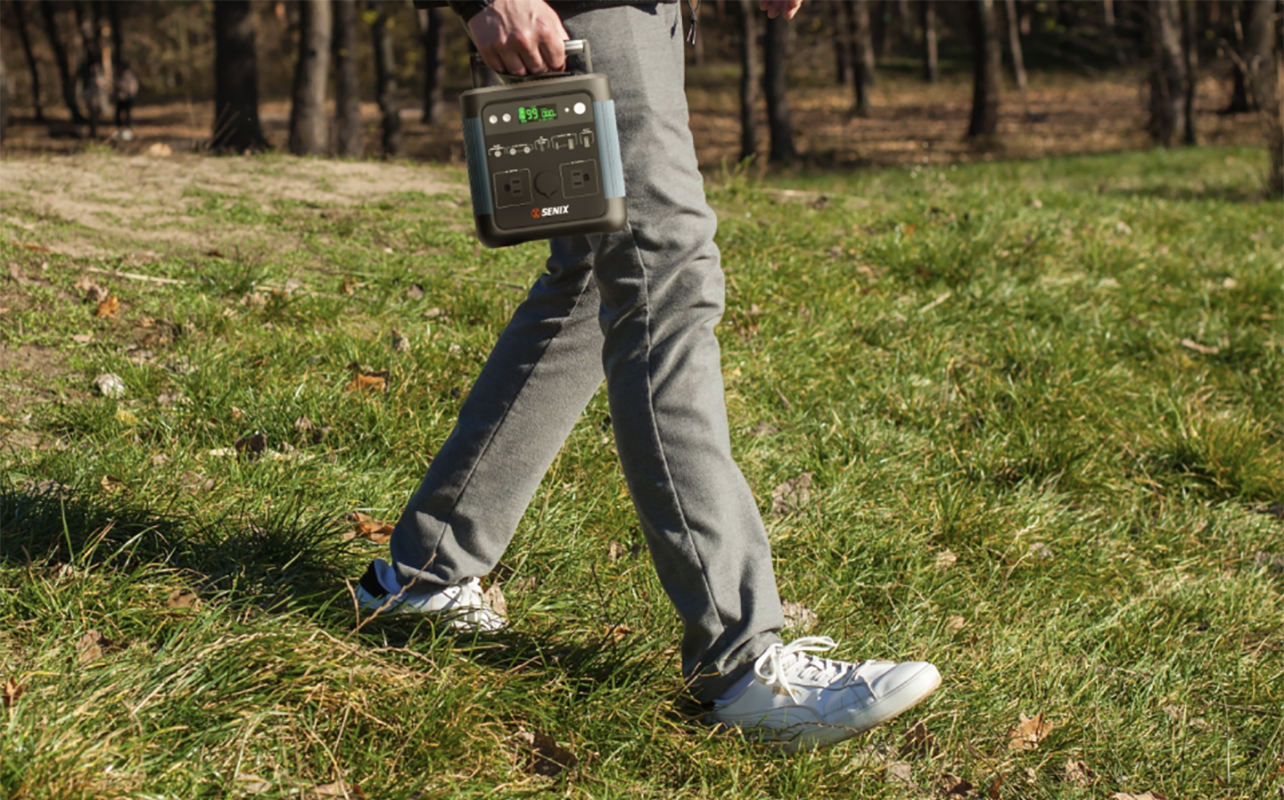
Now that you understand what a portable power station is, how do you choose the right one? This depends on your needs. Are you looking for something to charge your phone, tablet, headphones, portable Bluetooth speakers, and other portable devices on the go, like while camping or by the water? If so, a smaller, less powerful model, even a portable power bank, will do. For something to use in emergencies at home, like to keep your refrigerator going until the power comes back on or make sure medical devices like a CPAP machine can still be used, you’ll want more power.
Power output
Typically, a portable power station offers power output of anywhere from 150W up to 2,000W+. You should always get more power than what you think you need. To power something like a standard refrigerator, you’ll need 150-250W. If you’re looking to run a 150W fridge for 12 hours, you should have an at least 1800W portable power station. A smartphone, by contrast, only needs 2-6W, a laptop anywhere from 30-200W, and a space heater 750-1,500W. Determine the wattage of the device, multiply it by the approximate time you might need to power it, and that will give you the answer.
Battery capacity (Wh)
How long will it last per charge? This pertains to how much electricity the unit can store, even when it’s fully charged. That depends on what you’re charging and for how long. Take the wattage of portable power station and divide it by the wattage of the device you want to charge. This will give you the lifespan per charge. For example, if you use a 1,500W portable power station to power a 250W fridge, it would be able to power it for 10 hours (1500 ÷ 250 = 10).
Port selection
Gather or list the devices you would want to charge and check what connectors they use. This will help you determine what ports you need the portable power station to have. You will also want to factor in how many of them you need to charge devices simultaneously. This can include AC, 12V/DC, USB-A, and USB-C.
Recharging options
Recharging options usually include AC, USB-A, USB-C, and 12V/DC. Unique options might also include a solar panel and even a built-in wireless charging pad. More specialized units have things like an RV outlet or an expansion connector for connecting two (or more) together for twice (or more) the power. The more ports the better. That’s especially if you want to recharge more than one thing at a time.
Portability & weight
Naturally, the larger the capacity, the larger and likely heavier the unit. Weigh this against how much power you actually need. You might have the budget to buy an ultra-powered unit, but if it’s too big and heavy to carry around on the campsite or weighs down the car too much for the road trip, that power might not be worth the trade-off. Smaller units generally have less power. But it’s worth it for the convenience if you plan to use it primarily on the go.
Price vs. performance
Budget models are worthwhile if you just want something to power your phone and tablet while at the rustic cabin or on a boat. But weigh the price against the performance. If it charges at a slow rate and doesn’t have enough capacity, you might not get what you need. Look for sales on higher-end models. Consider options with better performance than what you think you might need now, or in the future.
Budget models vs. premium
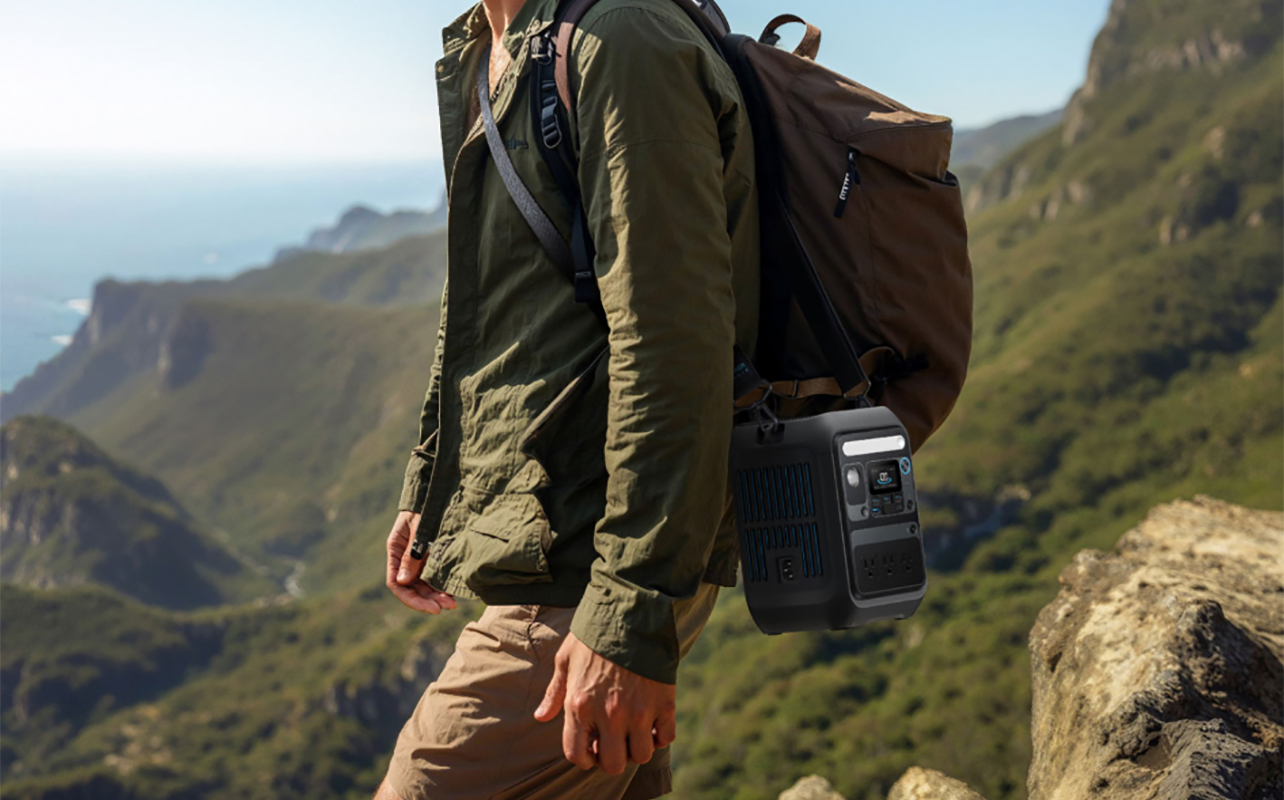
Premium models offer obvious benefits in power and performance. But depending on your use cases, a budget model might suffice if you have minimal needs.
Best portable power stations by category
Looking for the perfect portable power station? We have you covered with the best options based on how and where you want to use it.
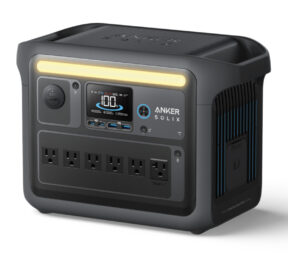
Best overall power station: Anker Solix C1000X
This five-star-rated portable power station offers 1,056Wh capacity with power up to 1,800 with SurgePad up to 2,400W when needed. It can keep everything from your phone to your laptop, coffee maker, even refrigerator sufficiently powered. It fully recharges in under an hour and comes with a five-year warranty with a 10-year, 3,000 battery cycle life. Plus, it has solar power as an alternative energy source if you’re heading off the grid. Connect devices via the 11 outlets, including AC, USB-C, and 12V. It’s heavy at almost 30 lbs., so this is likely a unit you’ll want to keep at home or up at the cottage, or bring on road trips in the RV. But it won’t weigh you down too much to carry to the campsite or park, comparable in weight to that of a toddler.
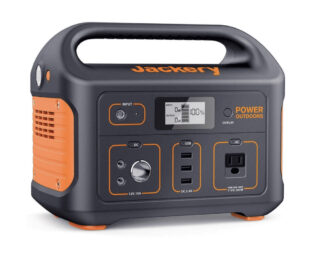
Best budget option: Jackery Explorer 550
Offering a great combination of portable form factor with power and value, especially when on sale, the Jackery Explorer 550 is a solid budget option. It offers 500W output and a 550Wh capacity, so you might not be able to power a large appliance. But it’s ideal for a laptop, drone, small appliance like a coffee machine or rice cooker, CPAP machine, and even a TV for a short period of time. It comes with a solar panel as well as AC, USB-C, and 12V output, and is housed in a compact package that weighs just 13.9 lbs, no more than a larger laptop. There’s even a handle for easy carrying. There are limited ports, but it’s great for a camping trip, boat ride, RV, or emergency power in a pinch should you lose electricity for a few hours at home or need to power devices on the go.
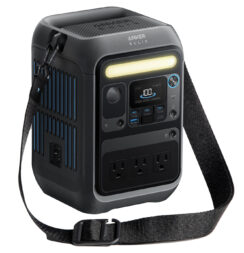
Best for camping: Anker Solix C300X
When you’re going camping, you want to pack light and need something you can hoist over your shoulder or even pack in your bag without weighing you down. The Anker Solix C300X is a fantastic option. With more than 150 reviews giving this model 4.9 stars, it’s simple yet perfect for powering up a Bluetooth speaker for tunes or a small appliance for cooking at a campsite. You get 288Wh capacity and up to 600W output with eight outlets so everyone can plug in as needed. There’s 100W solar charging along with AC and USB-C PD. Weighing just 9 lbs., it even has a built-in light so you can conserve your flashlight power.
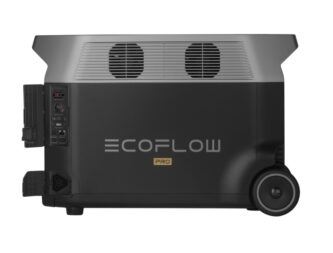
Best for Home Backup (1000W–2000W+): Ecoflow Delta Pro
For something super-high-powered you can use for home back-up power in the event of extended outages, consider the EcoFlow Delta Pro. It boasts 3,600Wh and can be paired with a second unit for a whopping 7,200W. With a 4.9-star rating, it’s great not just for back-up power, but power in an RV on the go. Able to power even heavy-duty appliances like air conditioners, washers, and dryers, there are expansion options as well, including extra batteries, smart generators, and a smart home panel. It has 15 outlets, including multiple AC, USB-A (some with fast-charge capabilities), USB-C, 12V, and more. The unit is large, heavy, and expensive. But it’s something you’ll want to keep in your basement for emergencies or pack into the RV before that big road trip.
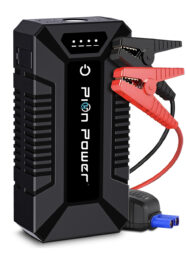
Best for Car Use: Pion-Power YC08
A bit of a departure from the usual form factor, the Pion-Power YC08 is a jump starter that serves double-duty as a 12V car battery and 7,200mAh power bank. Small and light enough to keep in the trunk of your vehicle, it can deliver up to 30 jump starts per charge, but also charge USB devices, including smartphones, tablets, and other devices in a pinch, like if you get stranded on the road. It also has a built-in LED panel light with three modes: indoor lighting, SOS, and vehicle emergency. Use it if you need to change a tire in the dark. Ultra-affordable, this power station, which is more like a portable power bank, should be in every driver’s trunk and makes a great gift for young or new drivers.
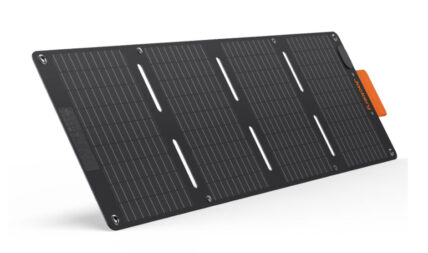
Best Portable Solar Panel: Jackery SolarSaga 40W Mini Solar Panel
Jackery makes plenty of full-sized portable power stations, but for something you can literally fold up and toss in your backpack for a hike, the SolarSaga can’t be beat. You’ll get limited recharging for devices like a phone, flashlight, or tablet via the dual USB-A and USB-C ports. But it means you’ll never be without communications while hiking, fishing, or camping. Weighing just 2.6 lbs., it folds up in four to slide into a backpack. It’s ultra durable, meeting an IP68 dust and water resistant rating. Designed to work with Jackery units like the Explorer 100 Plus and Explorer 300 Plus, grab one of those units and this panel together and you have a full set-up.
Portable power station 1000W vs 2000W

If you’re looking for a high-capacity portable power station, you might be wondering how much you really need. What can a 1000W vs 2000W portable power station power up? A 1000W portable power station is sufficient for running items like phones, tablets, laptops, CPAP machines, and small appliances. Just make sure the product’s power consumption is 1000W or less (ideally under).
To power something more energy-intensive, like a refrigerator, fan, TV, portable stove or electric grill, or power tools, consider a 2000W portable power station instead. If you need to power something that’s even more of an electricity hog like central AC, full-sized refrigerators, and high-powered space heaters, consider a model with even more power than that, or one you can double up. Most importantly, check the power capacity for the device before plugging in to make sure it’s within the limits.
Top brands and their strengths
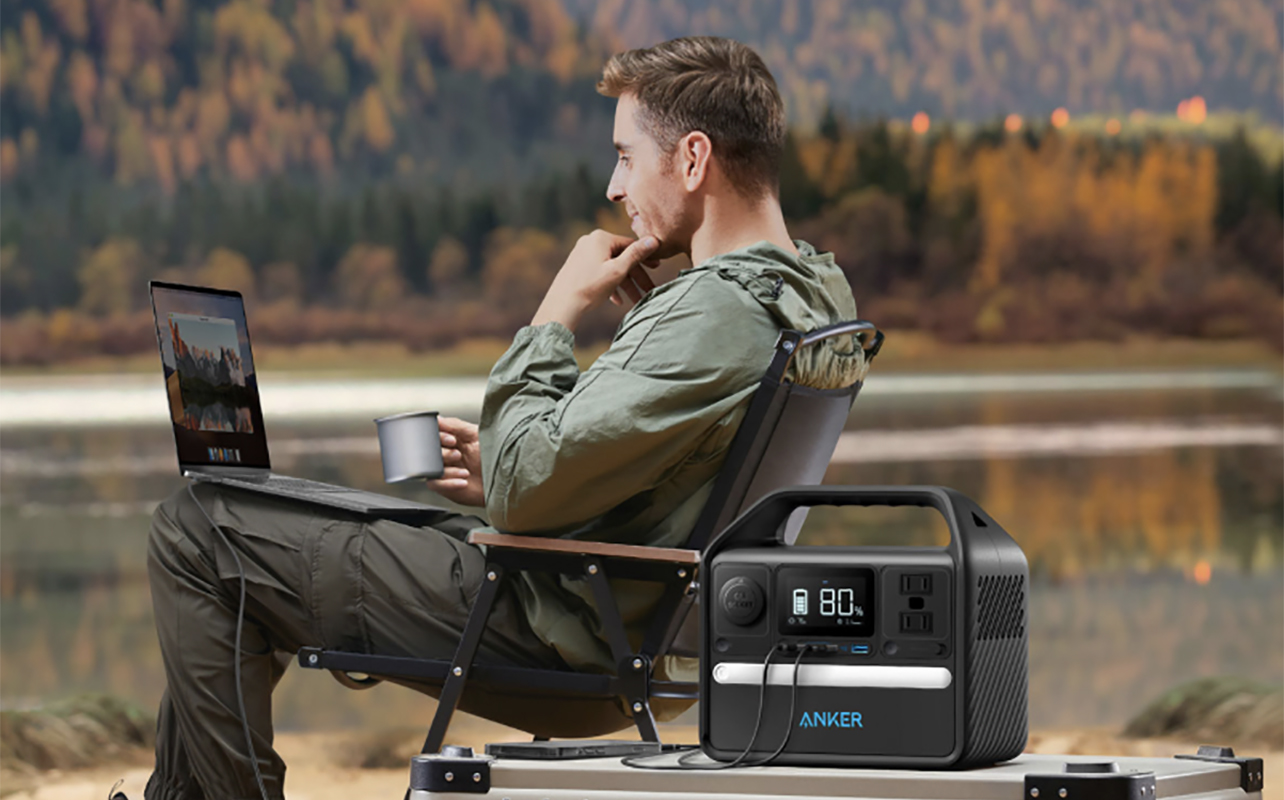
There are a few brands that dominate this space and make fantastic products you’ll appreciate.
Jackery: The brand is known for its lightweight and solar-friendly options. They are tested for durability, making them ideal for outdoor adventurers.
Bluetti: Making high-capacity units that use LiFePO4 batteries, they are popular choices for home back-up and use off-the-grid.
EcoFlow: Lauded for fast recharging and high output, there’s an assortment of sleek and compact models that work with a smart app. Perfect for emergency use, tech-savvy customers will love them.
Anker: Compact and user-friendly, Anker has a fantastic reputation for reliability. There’s a wide variety of models suitable for casual use, at-home back-up, and even short weekend trips.
Goal Zero: Reliable and employing rugged design, serious outdoor enthusiasts love Goal Zero. Whether it’s for a fishing trip or hike, there’s a variety of designs with add-ons for things like solar power on the go.
FAQs

Have more questions? We have answers!
What’s the best portable power station for CPAP?
A CPAP machine will generally need at least 400Wh capacity to run for a full eight-hour night, depending on the model. Consider a portable power station with a higher capacity to accommodate. A model with at least 1000Wh should suffice. But you can get away with a 500Wh one, which should be able to run the machine for anywhere from eight to 12 hours.
Can a portable power station power a refrigerator?
Yes! A high-capacity portable power station can power a refrigerator. For a full-sized refrigerator, look for one with at least 2000Wh if you think you’ll want to run it for at least half a day. Smaller to medium fridges can make do with a 1000Wh model and mini fridges or small coolers will be able to run for up to six hours with a 500Wh. What capacity you need will depend on the size and how long you want to run it. Always err on the side of caution and buy up a level.
How long do portable power stations last?
Portable power stations are usually rated to last for anywhere from 10 years up to 3,000 cycles, whichever comes first. It depends on how often and for how long you use them and to power what types of devices. Check the rated lifespan, ensure proper maintenance and storage, and you can extend the life. But plan to purchase a new one at least every decade.
Is a portable power station worth it for home use?
Yes! With the threat of power outages and storms than can knock out power lines, having a portable power station at home can be a lifesaver. Whether it’s to keep important medical devices running, power a fridge to avoid food spoilage, or ensuring you can connect with loved ones, they’re a crucial preparedness device to have at home. More compact models are useful for outdoor adventurers, like on the road in a car or RV, at a campsite or cabin, or even when out on the open waters. Either way, they provide safety, security, and convenience.
Find the right portable power station for you

To decide what portable power station is right for you, consider first how and why you want to use it. For back-up power at home, go with a larger, even heavier, high-capacity unit that will have a permanent home in a basement or closet. If you want to use it on a boat, RV, or at the cabin, look at a medium-sized option you can carry around but that offers enough juice to power up at least small appliances. Heading out o the go, like on a boat or to a campsite? There are plenty of compact and lightweight models with just enough power to keep your phone, flashlight, and portable speaker going.
If you plan to use it outdoors a lot, look for a model with a solar panel or solar panel add-on. For at home, explore options that can be expanded with connectable units or extra batteries. Then you can double up when needed, like in the event of an emergency of a power outage that’s going on longer than expected.
Check the power output, battery capacity, and ports to ensure they match your needs. Go a step up from what you think you need to provide a buffer, just in case. Once you weigh all these factors and review our picks of the best portable power stations, you’ll be in a good position to choose the right model for you.
Explore a full line-up of portable power stations at Best Buy Canada.




